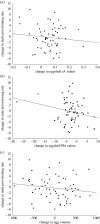Cosmetic coloration of cross-fostered eggs affects paternal investment in the hoopoe (Upupa epops)
- PMID: 33947236
- PMCID: PMC8097196
- DOI: 10.1098/rspb.2020.3174
Cosmetic coloration of cross-fostered eggs affects paternal investment in the hoopoe (Upupa epops)
Abstract
The signalling hypothesis suggests that avian eggshell coloration is a sexually selected female signal advertising her quality to its male partner, thereby stimulating his provisioning rate. This hypothesis has been tested for structural eggshell pigments, but not for cosmetic colorations, such as that produced by the uropygial secretion on eggshells. During the breeding season, female hoopoes (Upupa epops) host in their uropygial glands symbiotic bacteria. Females actively smear the eggshells with their secretion, protecting embryos from pathogenic trans-shell infections and changing eggshell coloration. Because the colour of the secretions is related to their antimicrobial potential, cosmetic eggshell coloration may act as a cue or even as a post-mating sexually selected signal if it affects male provisioning rates. To experimentally test this hypothesis, we cross-fostered already-smeared clutches between hoopoe nests, and quantified male feeding behaviour to females before and after the experiment. This approach allows disentanglement of the effects of female quality and of egg coloration on male investment. In accordance with the hypothesis, males adjusted their provisioning rate to the eggshell cosmetic coloration. This is, to our knowledge, the first experimental demonstration that egg colour stained with uropygial secretion could act as a post-mating sexual signal of female quality to males.
Keywords: Upupa epops; eggshell colour; female signalling; male investment; symbiotic bacteria; uropygial secretion.
Figures


References
-
- Andersson M. 1994. Sexual selection. Princeton, NJ: Princeton University Press.
-
- Burley N. 1988. The differential allocation hypothesis. An experimental test. Am. Nat. 132, 611-628. (10.1086/284877) - DOI
Publication types
MeSH terms
Substances
Associated data
LinkOut - more resources
Full Text Sources
